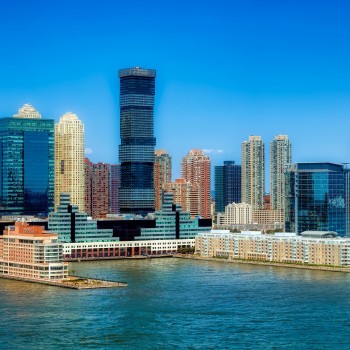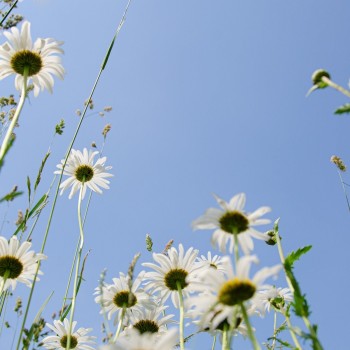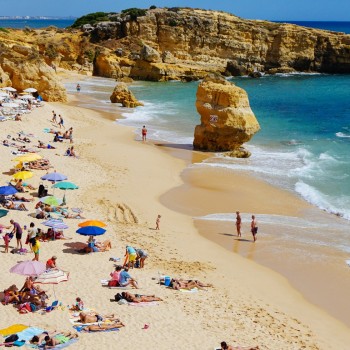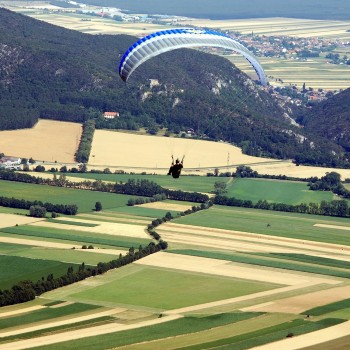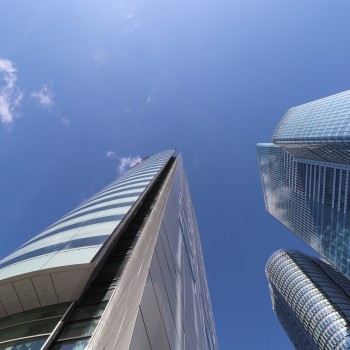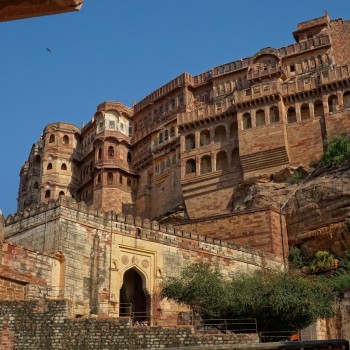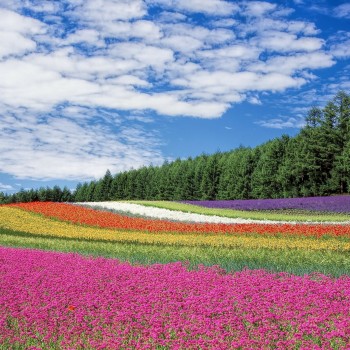Belarus
Belarus
Capital city description
Minsk is one of the oldest cities in Europe, the heart of Belarus, and the largest city located on the south-eastern slope of the Minsk Hills. Minsk houses the country's most important institutions: the Palace of Independence, the President of the Republic of Belarus, the National Assembly, the Council of Ministers, the National Bank of the Republic of Belarus. As the capital city of Belarus, Minsk includes many of the country's central government buildings and international embassies. Minsk is also home to the National Academy of Sciences of the Republic of Belarus (est. on 1 January 1929), the High-Tech Park, and the country's most prominent educational institutions. Minsk is the only city in Belarus with a metro service launched in 1984. Several churches are also present in this city. Minsk is also a popular tourist destination, and more than 400 travel agencies operate within the town.
Climate
Belarus has a moderate continental climate with warm summers and cool winters. Due to the average climatic conditions, winters in Belarus are not cold, and summers are not hot. The moderate temperature changes depending on the regions of Belarus. In July, the average temperature ranges from +17°C in the north to +18.5°C in the south. In January, the average temperature ranges from -4.5°C in the southwest to -8°C in the northeast. In some regions of Belarus, the temperature remains below zero for more than a third of the year.
- Spring: March to May
- Summer: June to August
- Autumn: September to November
- Winter: December to February
Languages spoken
A majority of the people speak Russian, and Belarusian, the two official languages of Belarus. Other minority languages include Polish, Eastern Yiddish, and Ukrainian.
Fun/Fascinating Facts
- Bialowieza Forest is the largest and oldest forest in Europe and home to one of the European endangered species, the European Bison, the largest animal in Europe, situated in Belarus. The national animal of Belarus is also the heaviest land animal on the entire European continent. The European bison is not only a large and majestic species; it's also one that nearly went extinct due to overhunting in the last century.
- Belarusians love potatoes. The potato is a staple of Belarusian cuisine, with over 300 potato recipes to choose from, such as tukmachi, a layered potato cake, and kalduny, potato-wrapped minced meat dumplings. Belarusians enjoy eating the veggie in various dishes, with potato pancakes being a national favorite.
- Belarus has become a medical tourist destination due to its free medical system. Medicine is almost entirely free, including everything from an annual checkup to cardiac surgery, neurosurgery, and transplants.
- Belarus is home to one of the largest libraries worldwide. The National Library of the Republic of Belarus opened in 2006 in Minsk, is one of the largest in the world. With an entire building, the area is 112 thousand square meters, books occupy 55 thousand square meters, and this whole structure weighs 115 thousand tons.
- The Republic of Belarus' capital, Minsk, has Independence Avenue's longest street in Europe. Its total length is over 15 km.
Unique Customs/Traditions
- The traditional Belarusian costume for women includes a chemise (kashulya) made of homespun linen; a heavy pleated checked or striped woven wool or linen skirt (spadnitsa or andarak); a homespun linen apron, and a waistcoat. Sleeves, shoulder insets, collar, and bosom have embroidered patterns in red and black yarn, the composition of ornamenting depending on the region where the set belongs. The apron has colored and ornamenting similar to those of the gown. The waistcoat is a festive attire was made of industrially manufactured textiles such as silk and velvet. The obligatory part of every costume is a multi-color belt with pompons, tassels, or fringes.
- The traditional Belarusian dress for males includes a linen shirt worn over the trousers, a waistband, and a pair of narrow trousers. The headdress is a simple straw hat. The shirt has a bosom cut and a turn-down collar. In certain regions, a waistcoat (kamiselka) is worn over it.
- Traditionally, Belarusian marriages are based on the couple's mutual consent and approval by both families. The virginity of the bride was an essential requirement for the wedding. After marriage, the bride is expected to move in with the husband's family. A woman is expected to be a good housekeeper and field worker. In the traditional zadruga household, the father and his sons would live in the common property. They might have individual homes in the property, but the entire property, livestock, crop fields, etc., are owned by the whole family.
Popular universities
| Name | Description | |
|---|---|---|
| Belarusian State University | Founded in 1921, Belarusian State University is a non-profit public higher education institution located in Minsk's metropolis, the City of Minsk. The Belarusian State University is a leading scientific, educational, innovative, and cultural center of Belarus. The University exploits its potential based on the best local and international experience to satisfy the intellectual, artistic, and social needs and interests of the Belarusian society and promotes the sustainable development of Belarus. Belarusian State University (BSU) offers courses and programs leading to officially recognized higher education degrees such as bachelor's degrees, master's degrees, doctorate degrees in several areas of study. See the uniRank degree levels and areas of study. | |
| Yanka Kupala State University | Established in 1940, the Yanka Kupala State University of Grodno is a major regional university complex in Belarus, integrating all education levels. It's a big-scale scientific center of the region, a classical type university acknowledged by the international community. Yanka Kupala State University of Grodno (GSU) offers courses and programs such as bachelor's degrees, master's degrees, doctorate degrees in several areas of study. | |
| Belarusian State Agrarian Technical University | Belarusian State Agrarian Technical University is a non-profit public higher education institution located in the metropolis of Minsk situated in the municipality of Minsk, founded in 1954. Belarusian State Agrarian Technical University (BSATU) is a rapidly growing multi-disciplinary teaching and research center of the Republic of Belarus, which trains highly qualified specialists. Specialists for the agro-industrial complex are trained at the main faculties: Engineering and Technology faculty, Business and Management Faculty, Farm machinery service faculty, Agro-power faculty, Agromechanical faculty, Faculty for preparation and vocational guidance of the youth. | |
| Belarusian National Technical University | Established in 1920, Belarusian National Technical University is a non-profit public higher education institution located in the urban setting of the metropolis of Minsk, City of Minsk. Belarusian National Technical University is the leading technical university in Belarus that trains engineering specialists in various fields of industry and production. BNTU has one of the biggest campuses in Minsk and provides accommodation to its international students. | |
| Belarusian State Academy of Music | The Belarusian State Academy of Music is one of the major research centers in liberal arts – musicology, folklore, sociology, aesthetics, and music pedagogy., based in Minsk, founded in 1932. The Belarusian State Academy of Music is the only university-type higher musical educational institution in Belarus. Belarusian State Academy of Music (BGAM) offers courses and programs leading to officially recognized higher education degrees such as pre-bachelor degrees (i.e., certificates, diplomas, associate or foundation), bachelor degrees, master degrees, doctorate degrees in several areas of study. | |
| Belarusian State Medical University | Belarusian State Medical University is a leading institution of higher medical education in the Republic of Belarus with a well-deserved international prestige and recognition. Founded in 1921, Belarusian State Medical University is a non-profit public higher education institution located in the urban setting of the metropolis of Minsk, City of Minsk. Currently, the educational process at the university is organized at eight faculties: Faculty of General Medicine; Dental Faculty; Pediatric Faculty; Faculty of Preventive Medicine; Pharmaceutical Faculty; Medical Faculty for International Students; Faculty of Career Guidance and pre-University Training; Faculty of Advanced Training and Retraining of Personnel and Military Medicine Institute. | |
| Belarusian State Economic University | Founded in 1933, Belarusian State Economic University is a non-profit public higher education institution in Minsk, Belarus. It is the leading institution of economic profile for higher education in the country; it is in constant development and searches for effective forms and education methods. The university provides training for specialists of a wide range of specialties in economics, management, law, and communications. | |
| Grodno State Medical University | Grodno State Medical University is one of the leading medical universities in Belarus, founded in 1958. It is the oldest medical school in Belarus and is considered one of the best medical universities specializing in medicine and medical psychology. Grodno State Medical University has six faculties: Faculty of General Medicine, Faculty of Pediatrics, Faculty of Medical Psychology, Faculty of Diagnostic Studies, Faculty of Advanced Training and Retraining, Faculty of International Students. | |
| Belarusian State Pedagogical University | Established in 1914, Belarusian State Pedagogical University is one of the oldest universities in Belarus, located in the urban setting of the metropolis of Minsk, City of Minsk. Belarusian State Pedagogical University, named after Maksim Tank (BSPU), combines academics, openness, and innovation, is the leading Belarussian pedagogical university in Minsk. Belarusian State Pedagogical University has outstanding scientists and teachers, famous scientific schools and centers, a high level of ethics of professional and personal relationships, the opportunity to transfer scientific, pedagogical, and life experience to future generations. | |
| Belarusian State University of Informatics and Radioelectronics | Founded in 1964, the Belarusian State University of Informatics and Radioelectronics (BSUIR) is a non-profit public higher education institution in Minsk, Belarus's capital. The university consists of six main faculties: computer-aided design, information, technologies and control, radio engineering and electronics, computer systems and networks, info-communications, and engineering and economics. There is also the military faculty, the faculty of pre-university preparation and occupational guidance, and the Institute of Information Technologies. The university offers over a hundred different degree programs at the bachelor, master's, and Ph.D. levels. | |
Festivals & Events

Menestral Guitar Music Festival
Date: February and March
Menestral Guitar Music Festival, a guitar-loving festival held every February and March, draws amateur and professional musicians from around Belarus. First held in 1992, the event occasionally draws a few big names who entertain the crowds with classical renditions of famous folk songs.

Yuri Bashmet International Music Festival
Date: June ( date varies)
The Yuri Bashmet International Music Festival has been taking place annually since 2006 in Minsk, Belarus. The festival concerts also took place in Belarus and the Grand Hall of the Moscow Conservatory, Beethovenhalle in Bonn, and other areas.
The Bashmet Festival became one of the most important music events in Europe because the best artists of the time are performing on its stage and because of a unique format and dialogue with the festivity audience, which its Artistic Director Rostislav Krimer holds.

International Festival of Arts “Slavianski Bazaar in Vitebsk”
Date: July
The International Festival of Arts “Slavianski Bazaar in Vitebsk” is the most significant cultural forum in the Republic of Belarus, uniting countries and continents. Its aim is expressed in its slogan - “Through arts to peace and mutual understanding.”
This lively festival is held every July in Vitebsk and is devoted to celebrating Slavic music. The event draws participants from Belarus, Russia, Ukraine, Bulgaria, Poland, and those from the former states of Yugoslavia. Famous singers from around the region attend and perform Slavic songs, backed by the National Concert Orchestra of Belarus.

Minsk International Film Festival Listapad
Date: November
The Minsk International Film Festival Listapad is a significant film forum bringing together famous filmmakers, actors, cinema fans. The program of the Minsk International Film Festival Listapad is rich and unique.
International Film Festival Listapad is held in Minsk every November. It is an opportunity to see the best foreign films for the first time and to visit an extensive educational program: workshops, discussions, exhibitions, and creative meetings of young and experienced filmmakers. The festival program includes films of Belarusian, Russian and European producers.

Kupala Night
Date: 6th-7th July
Kupala Night is an ancient Slavic ritual traditionally celebrated on the summer solstice evening. Kupala is held on the night of July 6th and 7th. The summer solstice celebrations usually include music, bonfires, and crowds gathered around the fire holding hands and performing a traditional dance. On the night of Kupala, people also thanked and honored other powers they worshipped, like the Fire, the Water, and the Earth.

Rock za bobrov
Date: August
Rock za bobrov is one of the most popular and old Belarusian festivals. This festival is recognized as “Belarusian Woodstock”, the most visited summer festival in Belarus, one of the best festivals in Eastern Europe, attracting more than 25 000 people from Belarus and nearby countries. Rock za bobrov music festival on aerodrome “Borovaya” is a place for the most popular bands and musicians across Russia, Ukraine, and Belarus to provide an amazing weekend full of music, tasty food, and entertainment!

Lidbeer Festival
Date: September
Lidbeer is a huge beer festival that takes place annually in the city of Lida near the walls of the famous Lida Castle. Centuries-old traditions of brewing, combined with popular rock music, are gathered at the festival by thousands of spectators from all over the world. The festival is divided into several zones, where everyone can have fun. Music lovers will dance in the stage zone, and beer fans can taste the best beers and enjoy snacks away from loud guitars.

A-fest
Date: August
The A-fest is the annual music festival of beer dedicated to music and beer enthusiasts, organized by Alivariya Brewery, the oldest brewery in Belarus. The A-fest is held in Minsk Loshitsky Park in August. Great artists and popular music bands perform during the event.
The festival took the best from its colleagues and created a truly comfortable place to relax, with great musicians, quality sound, varied programs, and delicious food.

Our Grunwald
Date: July
Our Grunwald is an annual international festival of medieval culture and music held by the Dudutki Museum of Ancient Crafts and Technologies in Belarus. The festival celebrates the military and secular culture and traditions of Belarus, dedicated to the reconstruction of the Battle of Grunwald between the forces of the Teutonic Order and allies the Grand Duchy of Lithuania, including modern Belarus, and the Kingdom of Poland.
The festival has been taking place since 2008 and brings together the country's best knight clubs in Minsk, who then take part in the dramatic reconstruction of the battle.
Attractions / Top Sights

Radziwill Castle
When to visit: May to September
When to visit: https://whc.unesco.org/en/list/1196/
Radziwill Castle was once owned by the Radziwiłł family of the Crown of the Kingdom of Poland and the Grand Duchy of Lithuania in Nesvizh, located in central Belarus.
The castle is an Architectural, Residential, and Cultural Complex of the Radziwill Family at Nesvizh. Radziwill Castle was inscribed in the Unesco Heritage Site list in 1996.

Mir Castle
When to visit: May to September
When to visit: https://www.worldheritagesite.org/list/Mir+Castle
The Mir Castle complex is an exceptional example of 16th-century fortification art. It's located in the town of Mir in the Grodno region of Belarus. Mir Castle is one of Belarus's most meaningful tourist attractions, an impressive 16th-century fortification, and a UNESCO World Heritage site.
The Mir Castle Complex has a well-developed infrastructure: two conference halls for high-level events, a hotel with 16 luxurious rooms, a restaurant serving ancient cuisine, a souvenir shop with products of Belarusian craftsmen.

National Library of Belarus
When to visit: May to September
Founded in 1922, the National Library of Belarus is the most extensive in the Republic of Belarus and the amazing landmark of Belarus. It houses the largest collection of Belarusian printed materials and the third most comprehensive collection of books in Russian behind the Russian State Library and the Russian National Library. The library is located in Minsk, the capital of Belarus.
The National Library of Belarus is now an information, research, sociocultural, and sociopolitical center.

Museum of the Great Patriotic War
When to visit: May to September
The Museum of the Great Patriotic War is a remarkable history museum located in Moscow at Poklonnaya Gora. The Museum of the Great Patriotic War in Minsk's best museum houses displays an excellent gallery of Belarus's history.
It has been Belarus's famous attraction for many years as it shows the heroism and suffering of Belarus during the Nazi occupation. The museum has about 24 exhibition halls, of which there are 142,676 items in the collection.

Minsk Sea
When to visit: May to September
The Minsk Sea is an artificially created reservoir located north of the capital city. The sea is overgrown with bank grass which acts as a recreation place. It is one of the famous Belarus tourist spots. The best sunsets and the starriest nights are all caught up here, among the woods and swamps, ample water, and extensive beaches. Summer is an excellent time to visit and on the edge of finding the sandy beaches with excellent restaurants and local cafes.

Naroch National Park
When to visit: May to September

Belovezhskaya Pushcha
When to visit: May to September
Belovezhskaya Pushcha is the most aged national Park of Europe situated in the Western part of Belarus within Grodno and Brest provinces (70 km away from Brest and 30 km away from Kamenets) along the state border with Poland and partially on the territory of Poland. The park is famous for its verdant green area with many kinds of flora and fauna. Belovezhskaya Pushcha National Park is home to a large population of European Bison and many other animals.
The world of birds in Belovezhskaya Pushcha is even more varied and rich. Along with typical western species such as a red kite or canary finch, Sibirian species, the three-fingered woodpecker, long-tailed tawny owl, and birds of North deciduous forests or the green woodpecker.

Holy Spirit Cathedral
When to visit: May to September
In Minsk, Belarus, the Holy Spirit Cathedral is dedicated to the Holy Spirit. One of Minsk's most instantly recognizable symbols is this magnificent, gleaming, two-towered Orthodox cathedral in the heart of the city. It is the central cathedral of the Belarusian Orthodox Church. Holy Spirit Cathedral was built in Baroque style between 1633-1642 as the main temple of the Catholic Bernadine convent.


